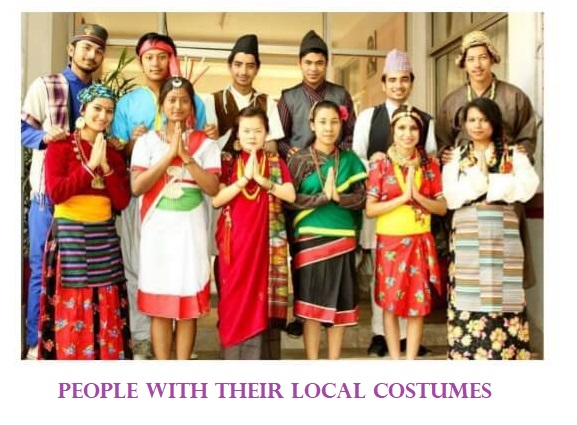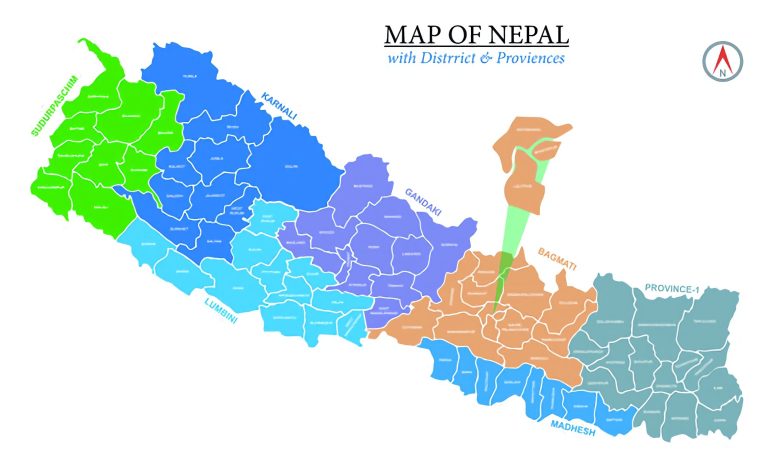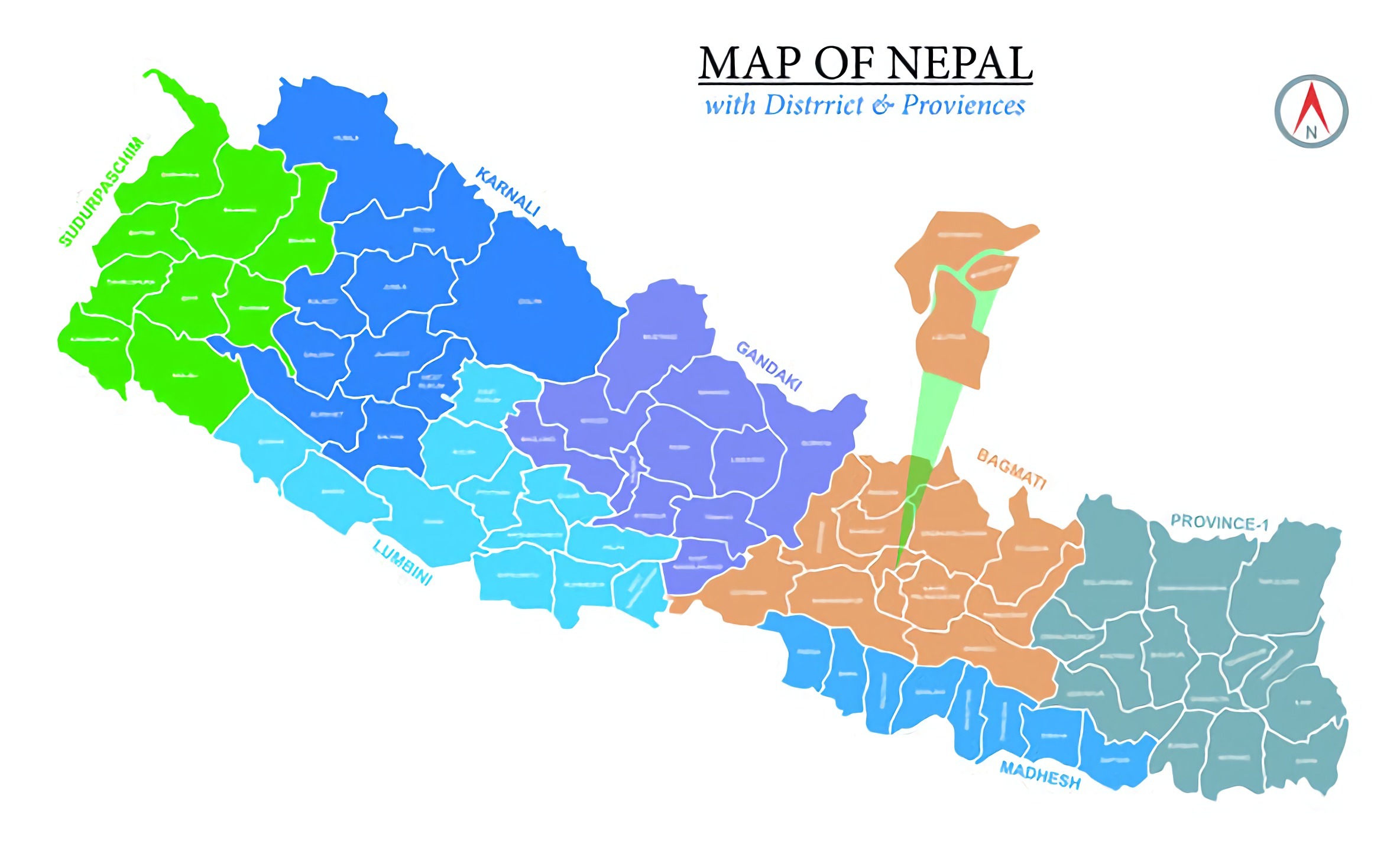People of Nepal
- By Roshan
- August 23, 2022
In terms of area, Nepal is considered to be the medium-sized nation in the world. However, Nepal is full of diversity. Nepal is a multi-ethnic, multi-linguistic, and multi-religious country. In Nepal, cultural diversity is clearly visible. People of 125 castes live in Nepal. Kshatriya, Brahmin, Magar, Tharu, Tamang, Newar, Muslim, Yadav, etc are some of the common castes of the nation. The different caste has their own culture, language, and lifestyle.
Nepal has a rough land structure and climatic diversity. Because of these, there is also diversity in the habitation of the people, and costumes. There are three geographical divisions in Nepal. People living in three geographical belts, their lifestyles and costumes are shortly described below.
Table of Contents
TogglePeople Of the Himal Region
The Himalayan region is located in the northernmost region of Nepal. This region is always covered with snow. The land is less fertile and covered with snow. Only a few people are engaged in agriculture. The population density in this area is very low. Sherpa, Gurung, Bhote, etc. are commonly found in this area. People of the Himal region usually migrate and spend the winter in the hilly and plain districts.
In this area, the infrastructure is not very developed, so life is very difficult. Also,
it is difficult to live in this area due to the effects of climate change. People living in the province wear thick clothes due to the extreme cold. Bhoto, Docha, and Bakkhu are the clothes worn in the Himal region of Nepal.
Pahad Region
People of different castes live in this region from east to west. In the region mainly Rai, and Limbu live, while in central Nepal Brahmin, Chhetri, Newar, Magar, Gurung and other castes are found. These tribes are also found in the western region.
According to caste, and religion, each community has its own language, culture, and customs. The people living in this province wear Daura, Surwal, Kakhad, Patuka, Topi etc. Even though transportation has reached most places. But due to the lack of proper roads and lack of basic needs like education and communication, life here is also difficult and painful.
Terai Region
To the south of Nepal lies Tarai Province. This area is the most developed area of the nation. Because of the plain land, life here is easier than mountain and Pahad life. The main occupation of people here is agriculture.
People here wear dhoti, kurta, and lungi as it is a bit hot here. The people of this province eat special pulses, bread, rice, fish, and curd. The festivals like Lakshmi Puja, Chhath, and Maghi festivals are celebrated with great pomp.
Different Caste of Nepal
In terms of language, culture, religion, and caste, Nepal is a rich nation. Diversity and variety are the unique and remarkable aspects of the nation. Realizing the need for the conservation of diversity, the Nepal Tourism Board and the National associations like ethnic museums are playing an important role in the nation.
Among the different castes in Nepal, some of the castes are listed below and discussed briefly.

BRAHMANS (Bahun)
Brahmans are the second most populous group and are members of the highest social caste. Brahmans are basically categorized into two types: “Kumai Brahmans” and “Purbiya Brahmans”. The original homeland of Kumai brahmans is a mountainous region of Nepa in the north named “Kumon”. And the Purbiya brahmans are supposed to have come from the eastern part of Nepal. The Purbiya brahmans are found all over Nepal. Jhapa, Morang, Kathmandu, Chitwan, Nawalparasi, Rupandehi, Kaski, Syangja, Parbat, Gulmi, and Arghakhanchi are the largest Brahmans settlement districts of Nepal. Kathmandu valley has the largest brahmans population in Nepal(410,126 people (23.5%). Brahmans are the most educated ethnic group in Nepal. They are the priestly caste and are exclusively found as priests in all Hindu temples. Brahmans (Bahun) have occupancy in most of the high-level government posts.
CHHETRI’S
Chhetri is the largest caste group and is in the second position after Brahmans. Chhetris has the largest group in the major district of Nepal. Some of the districts are Dhankuta district, Sankhuwasabha district, Okhaldhunga district, Udayapur district, Ramechhap district, Dolakha District, Salyan district, Surkhet district, Dailekh district, Jajarkot district, Dolpa district, Jumla district, Mugu district, Humla district, etc. In the ancient period of Nepal, Chhetri played an important role in the unification of Nepal. Till now Chhetri has high-ranked posts in the Nepal army and police.
Magar
Magar caste is a tribal tribe of Nepal. June from Masryangdi to Dailekh and parts of Dolpa It has spread. And magar from seven surnames like Ana, Thapa, Pun, Ale, Roka, Gharti, and Budha, Other surnames have been formed. Besides agriculture, animal husbandry, mining, and handicrafts. The main occupations of this caste are in the security sector (Gurkha resume) and the field of education.
Tharu
The Tharu tribe is one of the tribal tribes of Nepal. Bharopeli is the mother tongue of the Tharu people. Belongs to the family. Their original land is the interior of the Madhesh and Tarai regions of Nepal. In some districts of Tarai, there is the majority of the Tharu caste. Their main occupation is agriculture. The Tharus consider themselves nature worshippers.
Tamang:
The living area of Tamang, which is counted among the tribes, is called Tamsaling.
They are divided into many types. They have densely settled in Kathmandu valley and surrounding districts. Animal Husbandry, Agriculture, Thangka
And making various craft materials is their main occupation.
Rai:
And they belong to the tribal Kirat clan, also known as Khumbu. of Nepal
Solukhumbu, Okhaldhunga, Khotang, Bhojpur, Sankhuwasabha, Dhankuta, Ilam and Udaipur. And it is their main residential area. These are mainly paddy, millet, and cassava cultivation. They do animal husbandry and paper-making business.
Gurung
Among the indigenous tribes of Nepal, the Paner Gurung (Tamu caste) are scattered inside and outside the country. Even if found, they are from Kaski, Lamjung, Gorkha and Manang of Gandaki region. Although the profession is animal husbandry and agriculture, trade includes domestic and foreign security sectors. And is also found to be very involved in government service. Gurung speaks the Tamu language.
Limbu:
The indigenous Limbu caste of Nepal is Sankhuwasabha, Dhankuta, and Tehrathum, east of the Arun river. They live in Taplejung, Panchthar, Ilam, Jhapa, Morang, and Sunsari. Limbu Caste also has many surnames. They do agriculture and animal husbandry business. Limbus worship nature as their religion.
Sherpa
The northern region of Nepal is home to Sherpa. The majority of the population of Sherpa is found in the Solukhumbu district of Nepal. They are also scattered in various mountainous districts of the country. Animal husbandry and farming are their main occupation. They follow the Buddhism religion and their language belongs to the Bamerly family. Losar, Dumzi, Pfangdi Lhopso, Yarjang, Kangsur, Dhukpa Chhechu, Ngyungne, Chhechu are the main festivals celebrated by sherpa groups.
Sunwar
Sunuwar caste is one of the main and historical castes among the tribals of Nepal. There are four branches/communities of the Sunuwar Kirat dynasty “Rai, Limbu, Sunuwar, and Yakkha” Sunuwar mostly lives in the Eastern part of Nepal, Sikkim of India, and the Darjeeling region of India. The Sunuwar caste, who worship nature as god and follow religion/Philosophy is called ‘Mukdum’. The origin of this race is from, Okhaldhunga, Dolakha, Sindhuli are currently the main cities and in the eastern region of Nepal. There is a dense settlement. The traditional occupation of this caste is hunting, and artistic materials, they are currently engaged in agriculture. Udaulai and ubauli are the main festivals of this caste group.

